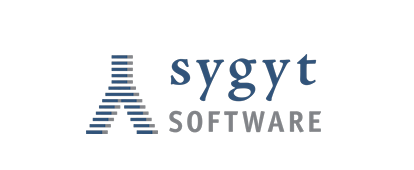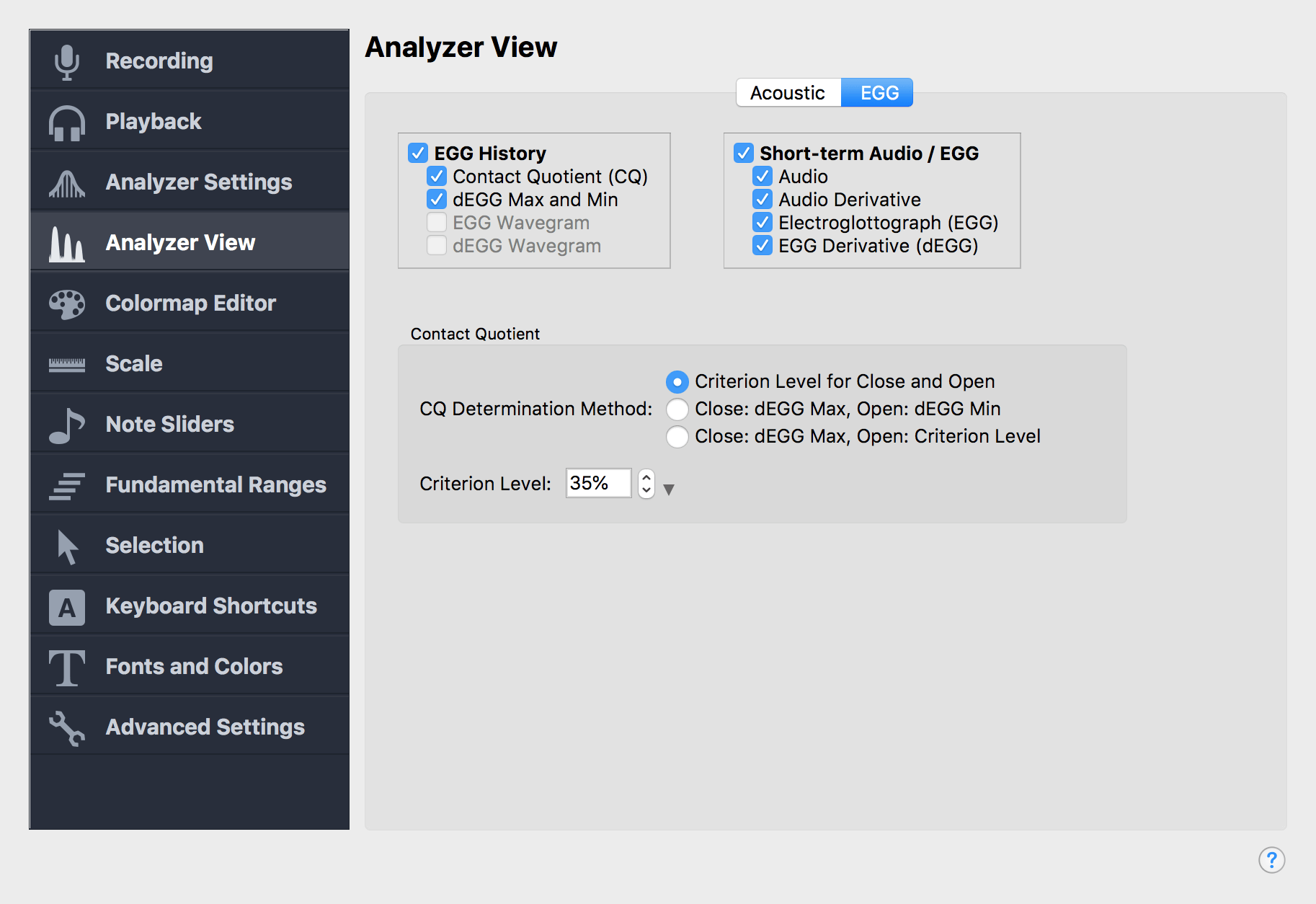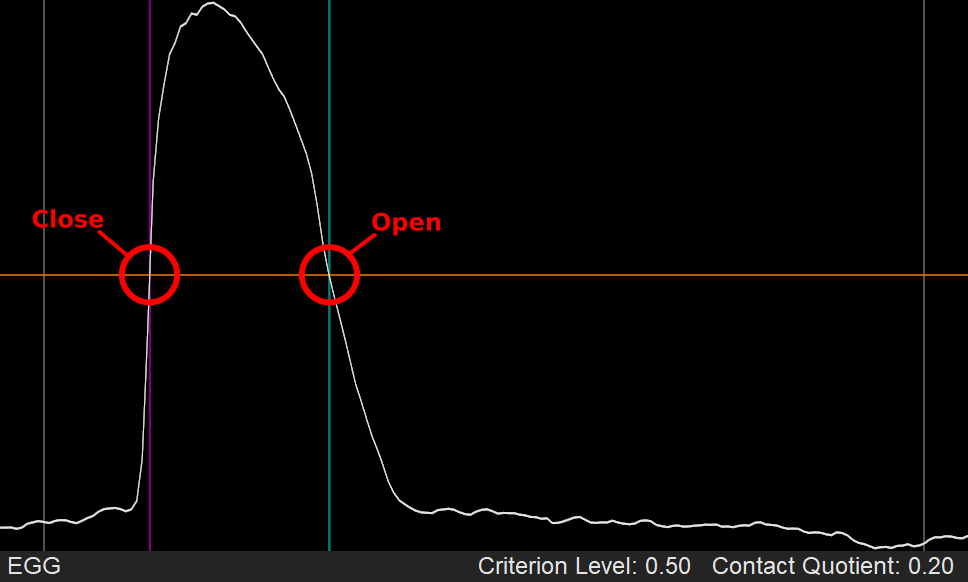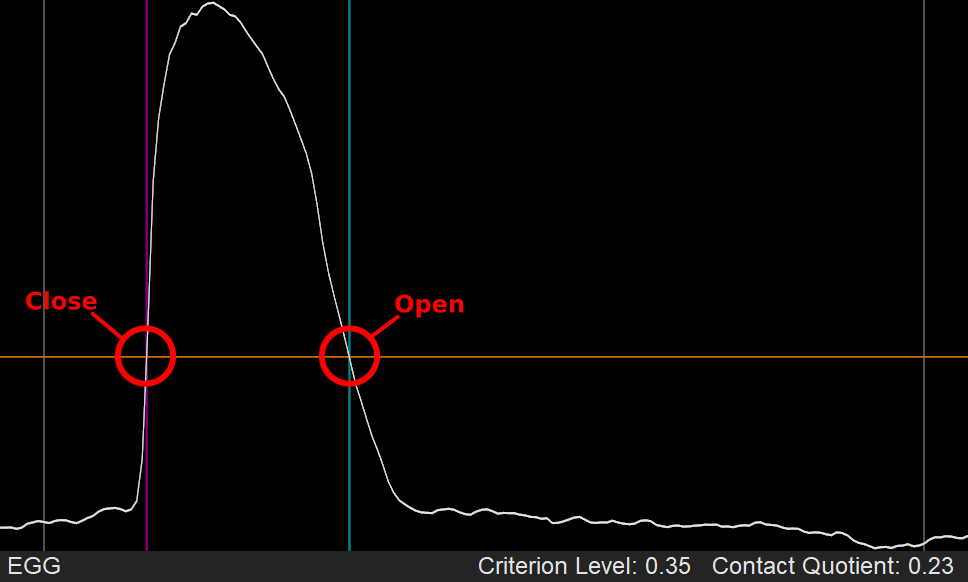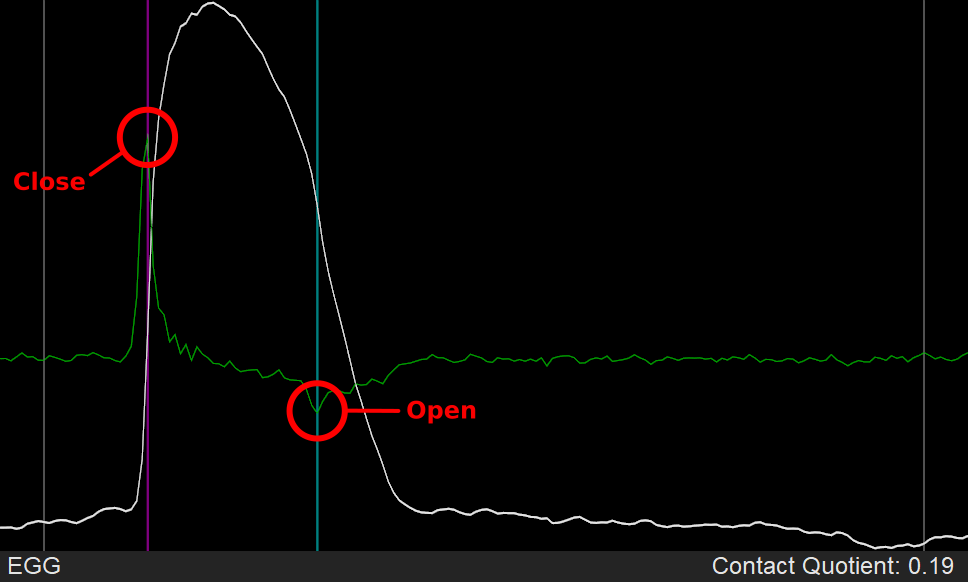EGG Display Settings
On this settings page you can choose the appearance and behaviour of the
Electroglottograph (EGG) display.
The EGG features are only available in VoceVista Video Pro. Please view our products page for a comparison of the different editions.
The EGG History shows how the contact quotient and the dEGG Maximum and Minimum change over time. It is equivalent to the long-term analyzer display that shows the spectrogram for audio content.
- Contact Quotient (CQ) History
Select this option to display the Contact Quotient in the EGG History view.
- dEGG Max and Min
If selected, this will display the maximum and minimum of the derivative of the EGG (dEGG) in the EGG History.
- EGG Wavegram
This will show the EGG Wavegram in a future version of the software.
- dEGG Wavegram
This will show the dEGG Wavegram in a future version of the software.
The short-term EGG display shows a few periods of the EGG and the Audio signal. It is equivalent to the short-term view that shows the spectrum.
The short-term EGG View has an upper half for the audio signal, and a lower half for the EGG signal. You can select which of the following signals to display:
- Audio
This will display a few periods of the audio channel.
- Audio Derivative
If selected, the derivative of the audio signal will be displayed.
- Electroglottograph (EGG)
Display the EGG signal.
- EGG Derivative (dEGG)
Display the dEGG, which is the derivative of the EGG signal.
The Contact Quotient (CQ) is a measure of the amount of vocal fold contact. When looking at a period of the EGG signal (the amount of time until the signal repeats itself), a CQ of 50% would mean that the vocal folds are have contact for half the period, a CQ of 25% percent would mean that they have contact for one quarter of the period, and so on.
It is important to note that the EGG cannot give complete information about the vocal fold closure, it can only indicate that the contact of the vocal chords has somehow increased. By looking at the EGG alone, we cannot with certainty say if the vocal chords are completely closed, or if they are closed at all. That’s why it is more accurate to use the term Contact Quotient instead of Closed Quotient.
There are several methods to calculate the Contact Quotient:
- Criterion Level for Close and Open
This method draws an imaginary line across the EGG signal and measures where the EGG signal crosses the line. The part where it is above the line is counted as closed, and the part below the line is counted as open. The location of the line is called the Criterion Level (CL). The value of the Criterion Level is arbitrary, and can be changed by entering a value on this settings page, or by dragging the measurement line on the EGG display.
Calculating the CQ with the Criterion Level is potentially less accurate than the other methods, but it is more robust than the other methods when the signal is noisy.
- Close: dEGG Max, Open: dEGG Min
This method looks at the derivative (the rate of change) of the EGG signal, the dEGG, and finds the maximum and minimum value in a period. The dEGG maximum is the point where the EGG signal rises most sharply, and the dEGG minimum is the point where the EGG has the fastest drop. In a clean signal, these points are most likely to indicate the vocal fold contact and de-contact events.
- Close: dEGG Max, Open: Criterion Level
This method is a mix of the other two methods. Some signals have a good dEGG Maximum, while the dEGG Minimum is buried in noise. In that case it might work well to use the dEGG Maximum to mark the vocal fold contact event, but to use the point where the signal drops below the criterion level to mark the de-contacting event.
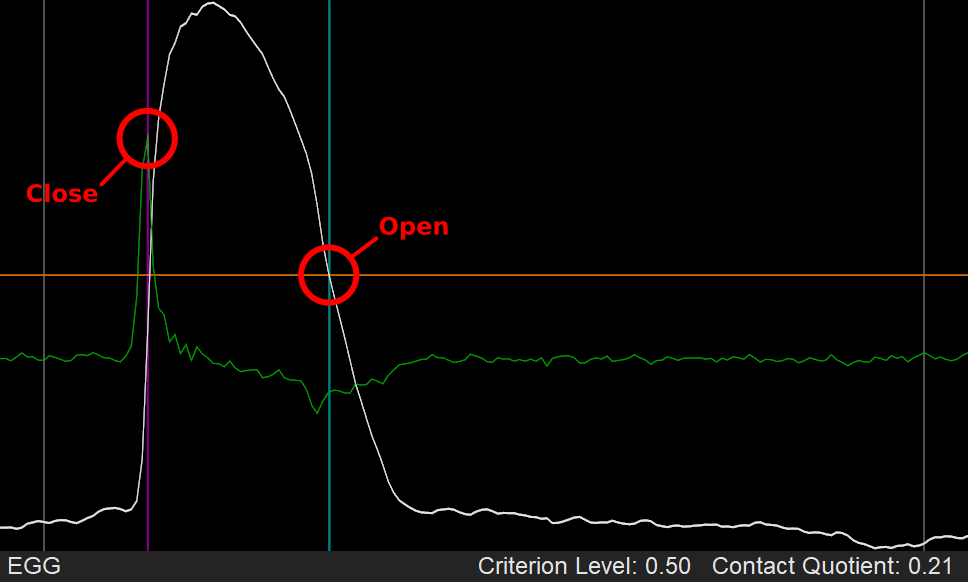
Figure 3.36. Using dEGG max for glottal closure, and Criterion Level at 50% for estimating glottal opening
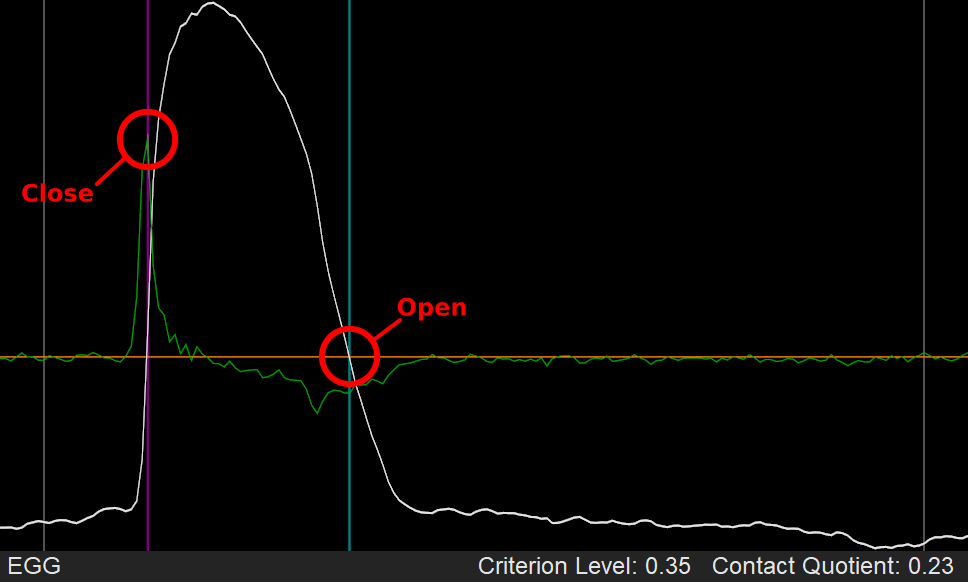
Figure 3.37. Using dEGG max for glottal closure, and Criterion Level at 35% for estimating glottal opening
